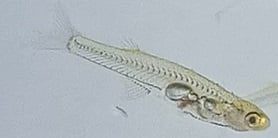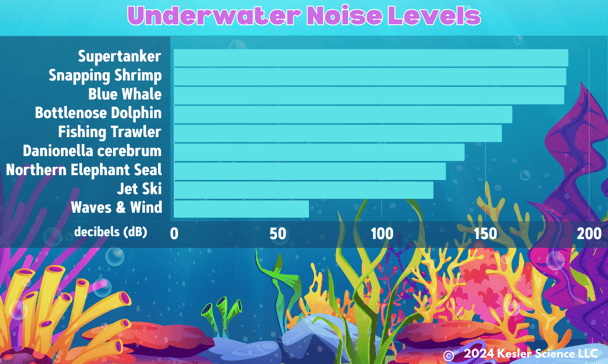World's Loudest Fish - Kesler Science Weekly Phenomenon and Graph
Check out this little fish. It's barely an inch long and has the tiniest brain you'll find in any vertebrate. Not too impressive, right? If I told you this little guy had an extremely unusual and powerful adaptation, what do you think it would be?

The answer? The Danionella cerebrum, hanging out in the cloudy waters around Myanmar, can belt out sounds as loud as a jet taking off! 🤯✈️ The male Danionella fish strike their swim bladders with cartilage for volume, then they flex a few special muscles to change up the pitch. Their little bodies can create sounds at 140 dB in nearby waters!
Why do these tiny fish need to make such a huge racket? In the murky waters where Danionella hang out, visibility is poor. Scientists believe the loud sounds might impress female fish or keep other males away.
This phenomenon could kick off a great class project where students dig into other weird and awesome animal abilities. How fun would that be?
The amazing thing is, there are aquatic creatures even louder than that!
Sound is a wave that moves through air, or in the case of our fish friends, water. Scientists use decibels to measure the pressure of that wave. The decibel scale is logarithmic, so if you crank up your music by 10 dB, it's 10 times louder.
Noise levels in water matter because many marine creatures rely on sound for their survival. Here's a graph of some natural and artificial underwater sound sources:

Did you notice? One of nature's loudest creatures is the little snapping shrimp. The shrimp make a loud noise with their claw that stuns or kills their prey. When many of these shrimp snap at the same time, it can even disrupt sonar!
With shipping noise, scientists have discovered that just slowing down the ship will drastically decrease the decibels created by propellers. Ships can also be designed to make less sound, like having their engines mounted off the hull so the engine noise does not transfer to water as easily. I wonder what students could research and design about reducing ship noise?
If you try it, snap some pics to share!- Chris
By the way, if I brought this graph to my classroom, here are some questions I'd ask my students:
💡Which ocean animals can produce noises louder than the Danionella cerebrum?
💡Other than the supertanker, which objects made by humans create the most ocean noise according to the graph? How many dB of sound do they produce?
💡How would the sounds of the ocean would be different without objects made by humans? Predict how human-made objects might impact other living things.


.png?width=352&name=Sand%20Composition%20Graph(2).png)
